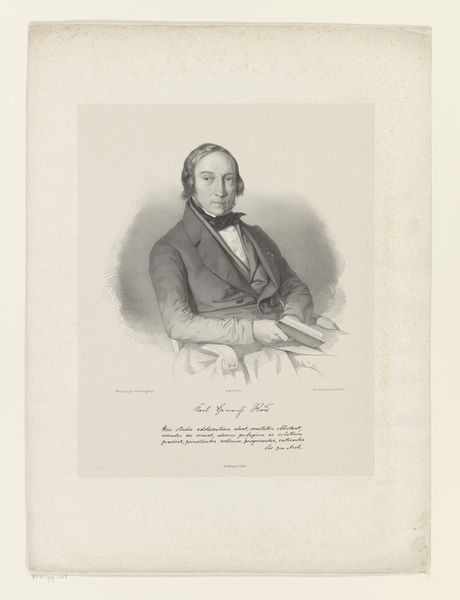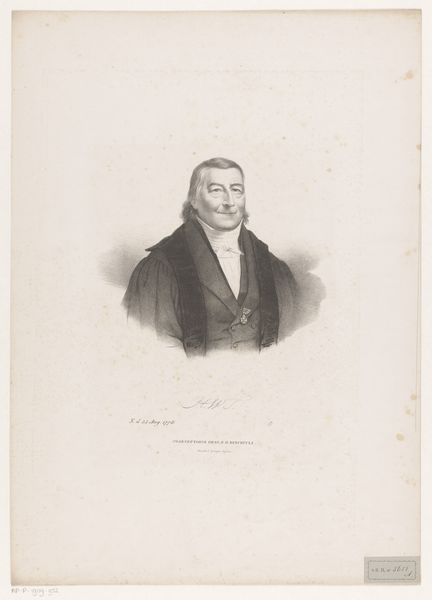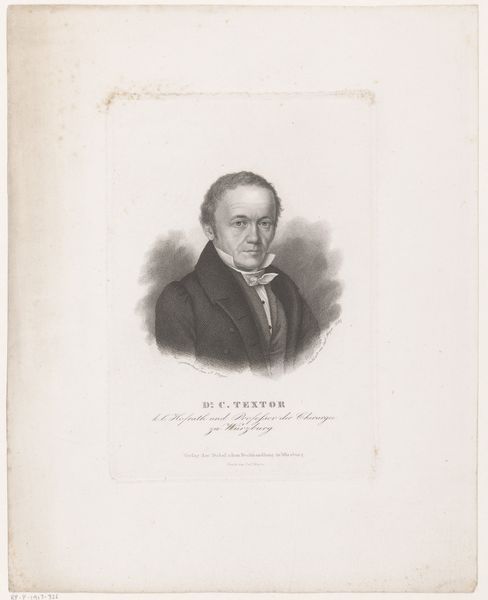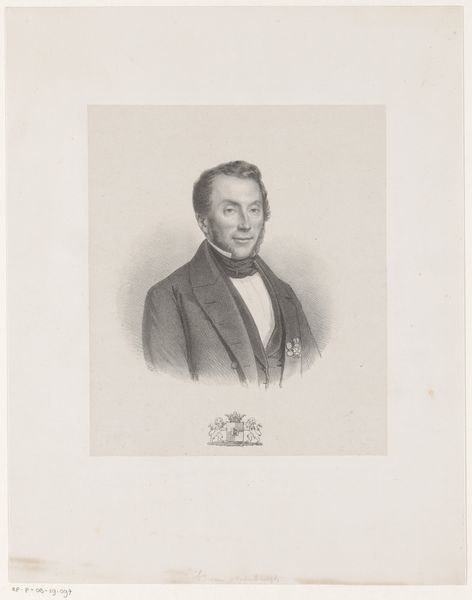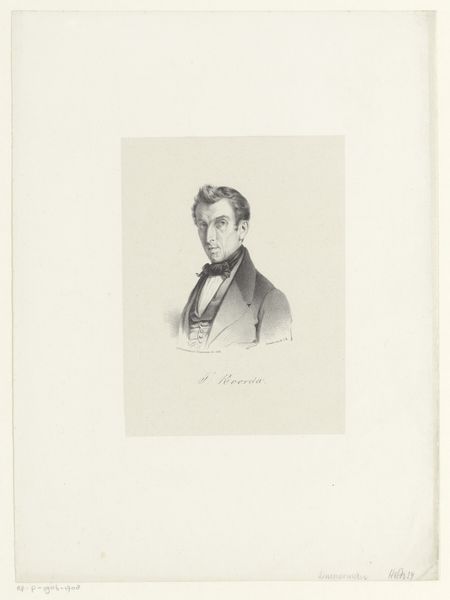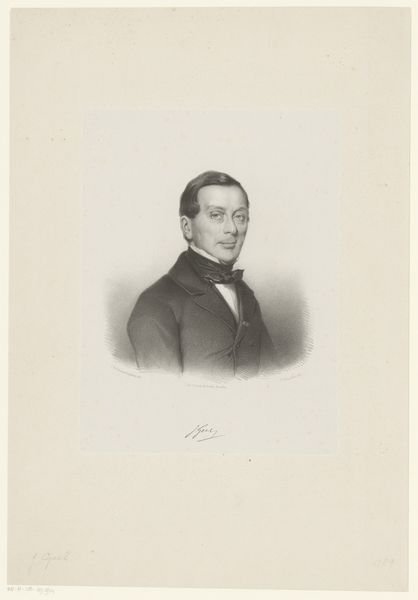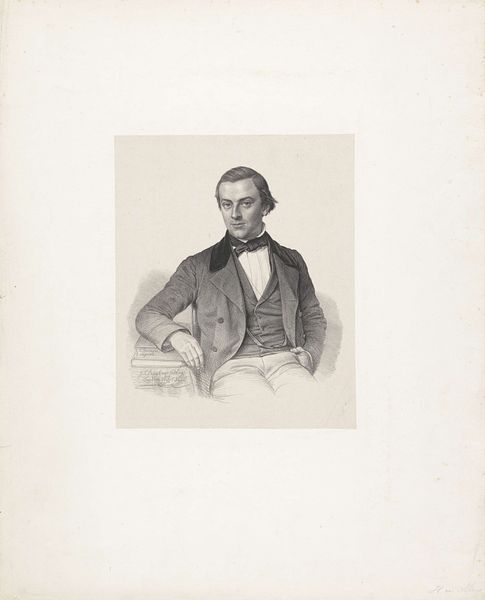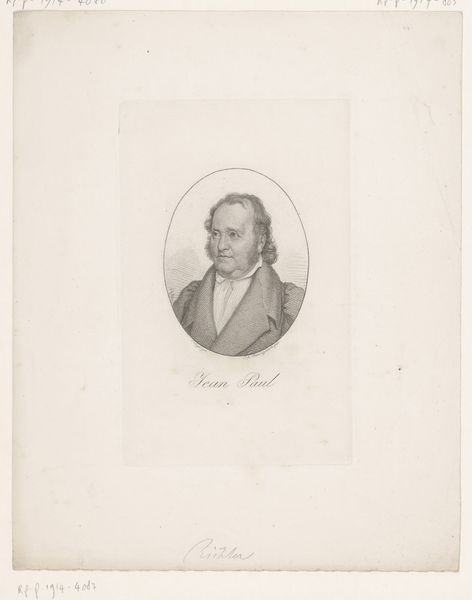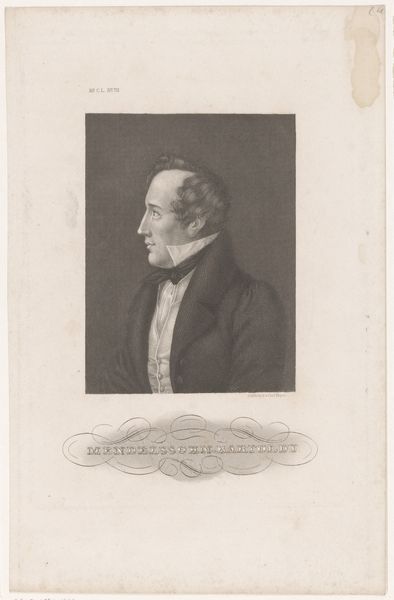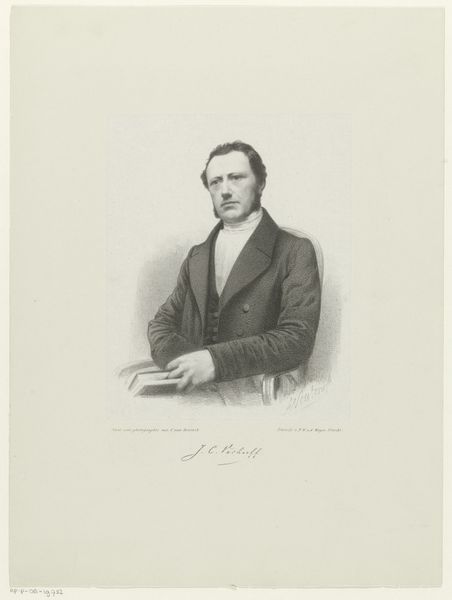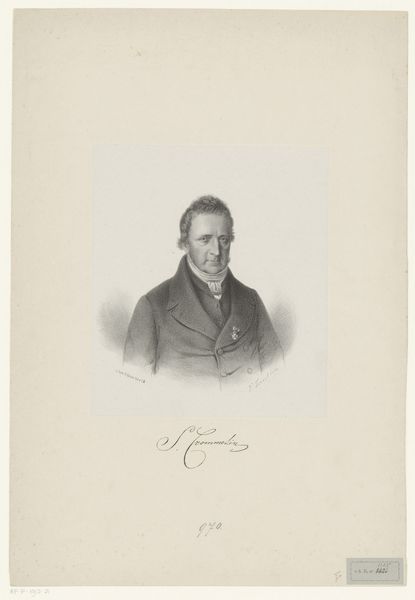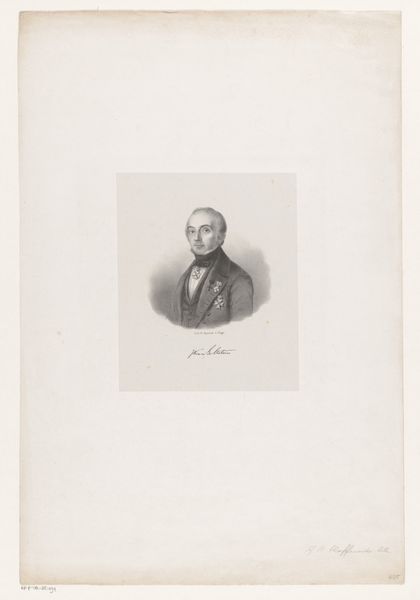
drawing, pencil
#
portrait
#
pencil drawn
#
drawing
#
pencil drawing
#
pencil
#
portrait drawing
#
academic-art
#
realism
Dimensions: height 272 mm, width 231 mm
Copyright: Rijks Museum: Open Domain
Curator: This is a portrait drawing of Klaas Simons Gorter. We believe it was created sometime between 1857 and 1891, and it’s currently held here at the Rijksmuseum. Editor: My initial impression is of reserve, a certain solemnity. The light is quite focused, and the subject's gaze meets yours directly, almost assessing. It gives it a surprisingly intimate feel for such a formal portrait. Curator: These kinds of portraits were important status symbols for the emerging middle class during that period. Having your likeness captured was a way of participating in the broader culture, and presenting a particular image to the world. Consider the societal context—photography was becoming more accessible, challenging traditional painting. Drawing portraits with meticulous realism allowed one to still participate in art. Editor: Absolutely, and I find the pencil medium fascinating here. The fine lines create a sense of detail but also a softness, like a memory being gently sketched. Notice the slightly averted eyes and almost melancholy mouth; I sense a deep introspection and complexity. The careful modeling of the face pulls me in, and seems to attempt to reveal his inner essence. Curator: I agree, and it's interesting to note how artistic and political movements informed such representations. Academic art placed emphasis on rationality, perhaps an assertion against Romantic ideals which prized raw emotionality. This pencil portrait showcases not only realism but the mastery and control valued by these movements, and more broadly desired by an expanding middle class seeking status and representation. Editor: Indeed. And I can't help but wonder about Gorter's personal history when observing symbols like the stern suit and buttoned up bow-tie, suggestive of an understated stoicism. They indicate something specific about him. But I find it hard to completely dismiss this era's aesthetic ideal of portraying powerful men in a particular dignified light as influencing factors too. Curator: Well, that duality is part of what makes the image so interesting. It’s a formal exercise embedded in social and political narratives. The subtle rendering draws the viewer to consider both what is apparent and the hidden assumptions of power and representation. Editor: It does speak to an era trying to define itself through images—imposing character through symbols of success. This encounter made me reflect again about how much the public image actually represents the inner self. Curator: Exactly. It forces us to ask what it truly means to be seen.
Comments
No comments
Be the first to comment and join the conversation on the ultimate creative platform.

